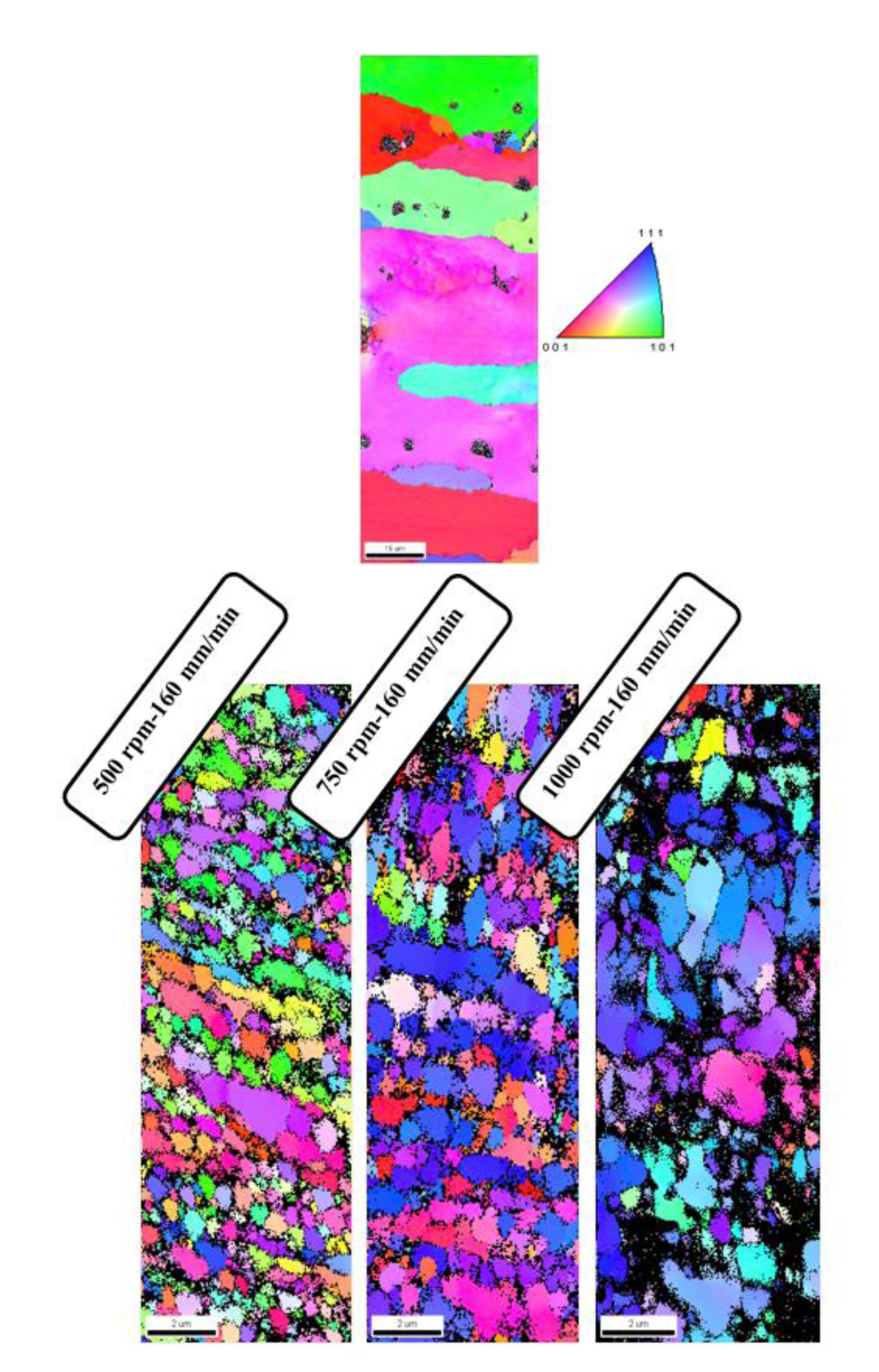Sun, Nov 10, 2024
[Archive]
Volume 15, Issue 1 (March 2018)
IJMSE 2018, 15(1): 53-63 |
Back to browse issues page
Download citation:
BibTeX | RIS | EndNote | Medlars | ProCite | Reference Manager | RefWorks
Send citation to:



BibTeX | RIS | EndNote | Medlars | ProCite | Reference Manager | RefWorks
Send citation to:
Alvand M, Naseri M, Borhani E, Abdollah-Pour H. Microstructure and Crystallographic Texture Characterization of Friction Stir Welded Thin AA2024 Aluminum Alloy. IJMSE 2018; 15 (1) :53-63
URL: http://ijmse.iust.ac.ir/article-1-1079-en.html
URL: http://ijmse.iust.ac.ir/article-1-1079-en.html
Abstract: (19267 Views)
Friction stir welding (FSW) is a promising technique to join aluminum alloys without having problems encountered during fusion welding processes. In the present work, the evolution of microstructure and texture in friction stir welded thin AA2024 aluminum alloy are examined by electron backscattered diffraction (EBSD) technique. The sheets with 0.8 mm thickness were successfully welded by friction stir welding at the tool rotational speeds of 500, 750, and 1000 rpm with a constant traverse speed of 160 mm/min. EBSD revealed that stir zones exhibited equiaxed recrystallized grains and the grain size increased with increasing the tool rotation rate. The fraction of high angle grain boundaries and mean misorientation angle of the boundaries in the FSW joints at 500 rpm were 63.6% and 24.96°, respectively, which were higher than those of the sample welded at 1000 rpm (53.6% and 17.37°). Crystallographic texture results indicated that the Cube {001}<100> and S {123}<634> textures in base metal gradually transformed in to Copper {112}<111> shear texture. It was found that with increasing the tool rotation rate, the intensity of Cube {001}<100>, Y {111}<112>, S {123}<634>, and Dillamore {4 4 11}<11 11 8> texture orientations increased and the intensity of Brass {011}<211> texture orientation decreased.
Keywords: Aluminum alloy, Friction stir welding, Electron backscatter diffraction, Microstructure, Crystallographic texture
Type of Study: Research Paper |
Subject:
forming and mechanical properties
Send email to the article author
| Rights and permissions | |
 |
This work is licensed under a Creative Commons Attribution-NonCommercial 4.0 International License. |







